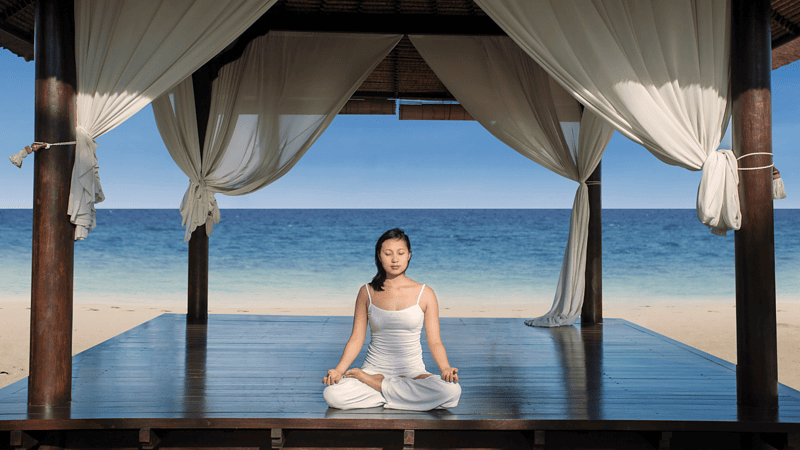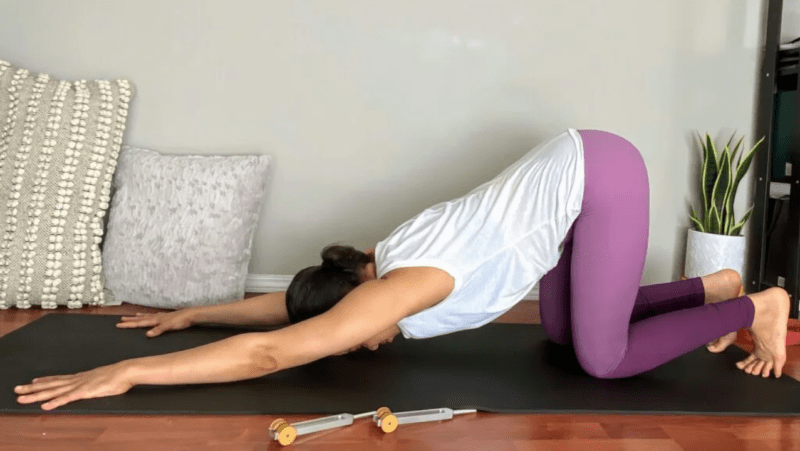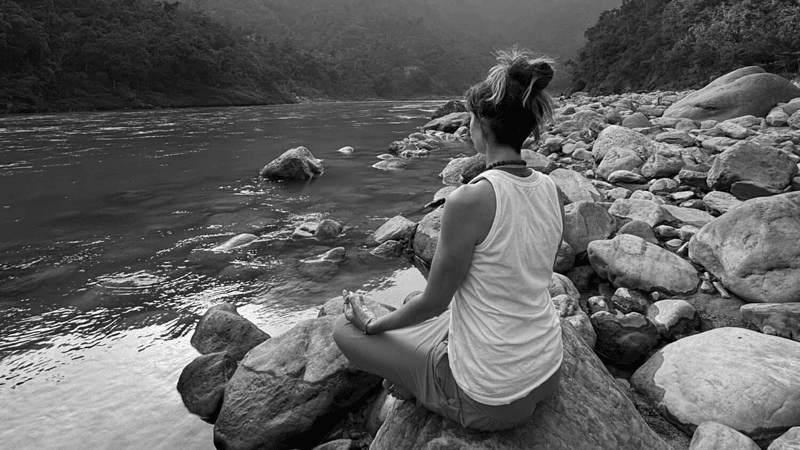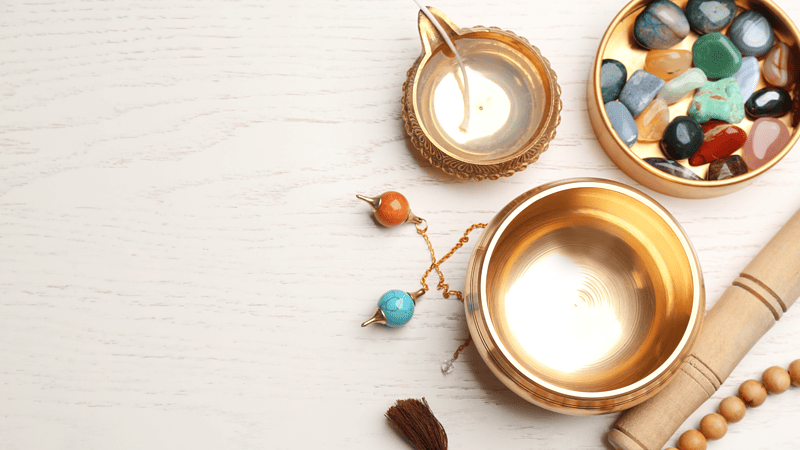
Vibrational Yin for holiday stress
Reducing the stress of the holidays with a Vibrational Yin practice. By Laurel Stuart
It’s the holidays again! For many, this is a happy time of the year. A time for celebrating with loved ones; a time to partake in rituals that bring comfort and joy.
In Traditional Chinese Medicine (TCM) winter is the time of year associated with rest, conservation, and reflection. Good health in TCM is achieved by living in accordance with the laws of nature.
As nature slows down in the northern hemisphere, humans are taught in TCM to conserve energy to promote good health. Paradoxically, however, the holidays can be a time of added stress.
If you are one of those stressed by the holidays you may enjoy this Vibrational Yin sequence. Vibrational Yin incorporates the stimulation of acupuncture points, primarily using sound while practicing yin yoga postures. The points used in this sequence support the kidneys — the organ of the body in TCM most affected by winter — and the liver and the heart.
The organs in TCM are not quite the same as in Western medicine. In TCM, the heart rules as emperor over all our emotions while the liver promotes the free flow of qi (energy) in our bodies.
In TCM, improper qi movement in the body can manifest as anxiety and stress. Practice this sequence in its entirety or add one or two poses to your regular practice. Let’s begin.
Wall Eye Stimulating Kidney One / KI 1 (Gushing Spring)
Point Location & TCM Use: KI 1 is located on the sole of the foot, approximately one third of the distance between the base of the second toe and the heel, in a depression formed when the foot is pointed (plantar flexed). Kidney one is used to calm the spirit and descend excess energy from the head. This point grounds our energy.
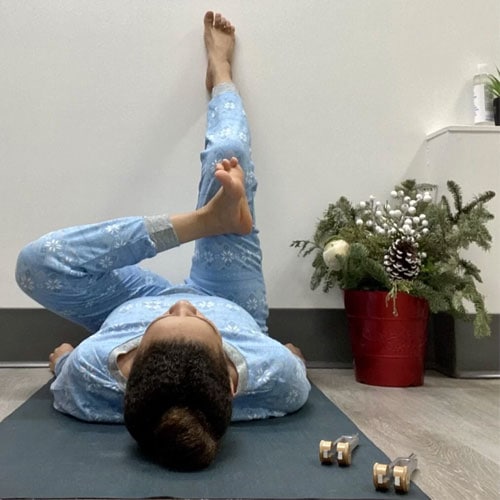
The Pose: Begin lying on your back with your legs straight up the wall. Your hips can be touching the wall or some inches away from the wall. Place your right ankle just under your left knee. Flex your right ankle. Slowly bend your left leg so your right foot and left thigh move closer to your chest.
Find a position that allows for mild to moderate sensations in your lower back and/or your right hip. The sole of your left foot is on the wall. Stimulate KI 1 on the right three times with a body tuning fork. To stimulate the point using a tuning fork, activate the fork (you can use the heel of your hand), place the foot piece of the fork on the acupoint and hold in place for approximately 20 seconds. Three rounds of stimulation is sufficient. Use a tuning fork that resonates with you. You can also stimulate the point by pressing on it for one to two minutes. Once you’ve finished stimulating the point settle into stillness. Hold the pose for another 1 to 3 minutes then straighten both legs. Repeat on the opposite side. Feel free to take Savasana after both sides or whatever movement feels best for your body.
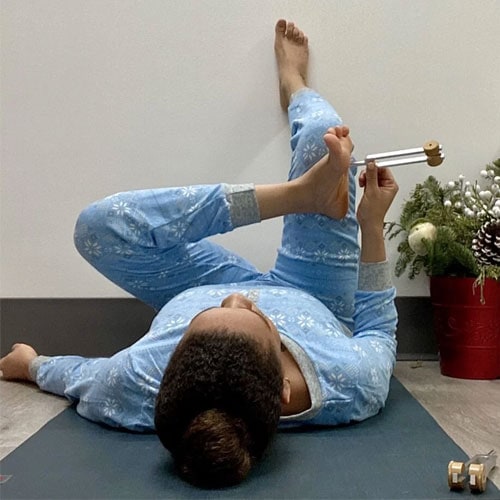
Dolphin Prelude Stimulating Gallbladder 20 / GB 20 (Wind Pool)
Point Location & TCM Use: GB 20 is located at the base of the skull, in a depression between your trapezius and sternocleidomastoid muscles. To find the point clasp your hands behind the back of your head and reach your thumbs towards your neck; use your thumbs to feel the base of your skull, ust below your skull bones you should find a depression between the before mentioned muscles. In that depression lies GB 20, an excellent point to relieve stiffness and pain in the neck muscles. The gallbladder meridian is very closely related to the liver meridian. This point clears the head, benefits the eyes and may help improve one’s ability to focus.
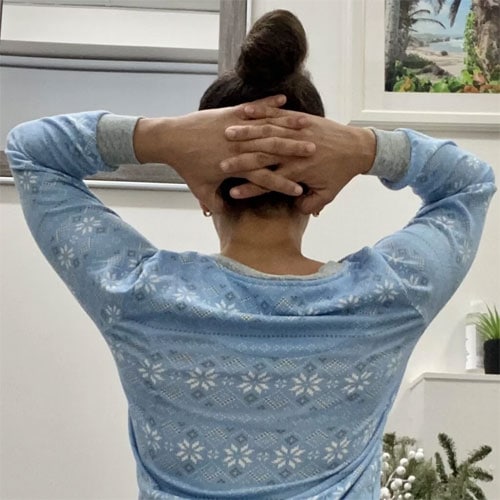
The Pose: Start on your shins and forearms. Have the elbows about shoulder’s distance apart. Interlock your fingers. Move your knees back approximately 8 to 12 inches and open your knees slightly wider than your hips distance. Pad the knees if they are uncomfortable. Lean back into the pose and notice the sensations in your upper arms, shoulders and upper back. Aim for mild to moderate sensations in the pose. If the stretch feels too intense, move the hips and shoulders forward slightly. To intensify the pose you may want to work with your elbows on blocks. Stimulate GB 20 on both sides of the neck by gently pressing on the point for one to two minutes, or you can stimulate the point using a tuning fork before, or during the pose. Stay in the pose for another 1 to 3 minutes, breathing into your upper back and the back of your heart. Feel free to rest in Savasana or take a few rounds of cat cow pose before continuing.
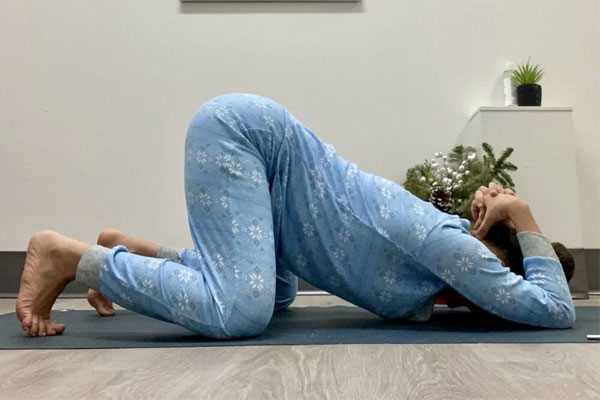
Reclining Deer Pose Stimulating Heart 8 / HT 8 (Lesser Palace)
Point Location & TCM Use: HT 8 is located on the palm of the hand, where the tip of the little finger rests when a fist is made. This calms the spirit and can be used for sadness and worry. As the fire point of the heart meridian, HT 8 clears heat that affects the heart; heat that may manifest as heart palpitations and agitation.
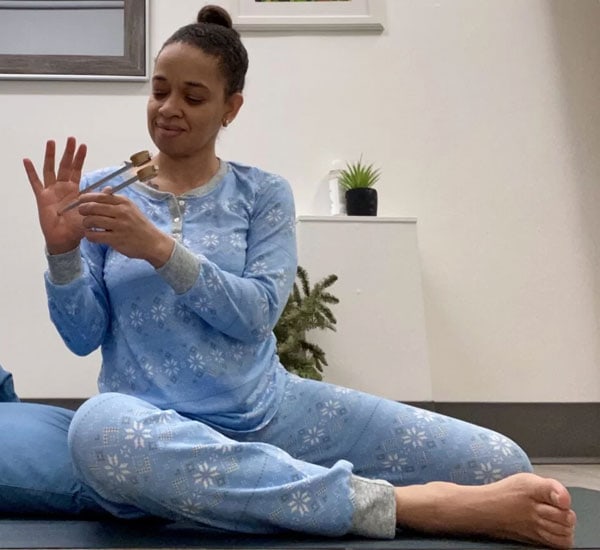
The Pose: Start in a seated position, take your right leg behind your hips and move your left leg if possible, into a 90º angle (or as close to a 90º angle as you comfortably can). Have a bolster or cushions next to your left hip. Slowly lower your upper body to rest on your props.
You can stimulate HT 8 while reclining or before reclining. Your knees and hips are pain free, the sensations in your body are mild to moderate. If the sensations in deer pose are too intense, or the pose is not accessible to you, omit this pose and add a reclining twist. Find stillness in the pose for a minute or two after stimulating HT 8. Release then repeat on the opposite side. A few rounds of windshield wipers may feel good before moving on.
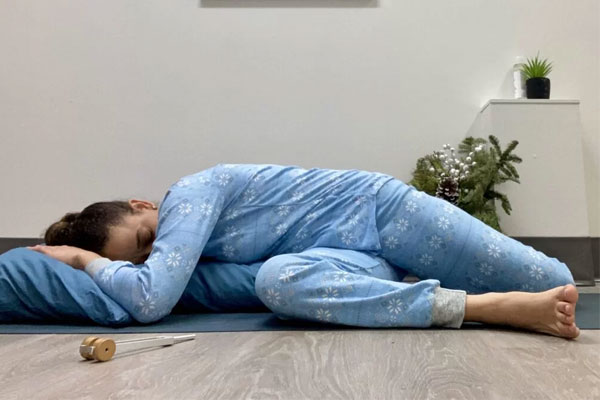
Wall Butterfly Stimulating Spleen 6 / SP 6 (Three Yin Intersection)
Point Location & TCM Use: SP 6 is located above your inner ankle, approximately one hands breath above the prominence of the inner ankle. SP 6 calms the spirit and is commonly used in TCM to treat digestive and emotional disorders. It is the meeting point of the liver, spleen and kidney meridians and as such has the ability to affect all three energy pathways.
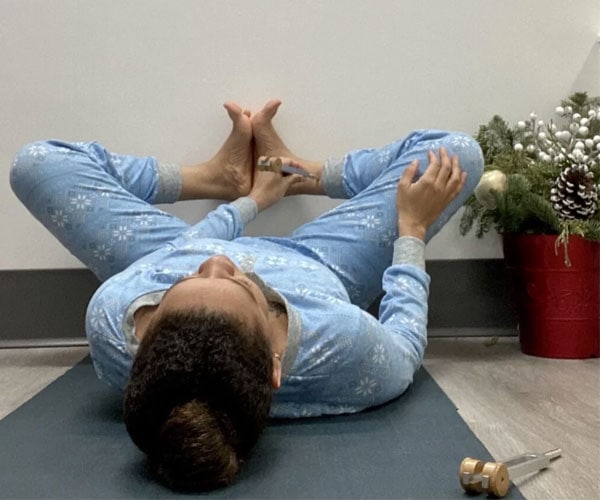
The Pose: Begin lying on your back with your legs up the wall. Bend your legs, bring the soles of your feet to touch and let your feet come as close to your groin as you comfortably can. You can support your outer thighs with blocks or cushions. You may also want to pad your sacrum or back for comfort. Stimulate SP 6 on both legs. Stay in the pose for another 1 to 5 minutes.
Wall Caterpillar Stimulating Liver 3 / LR 3 (Great Rushing)
Point Location & TCM Use: LR 3 is located in a depression (that may feel tender) approximately 1 to 1.5 inches from the web space in between the first and second toes. The point is located between the first and second metatarsal bones. Liver 3 clears the head and promotes the smooth flow of qi throughout the body.
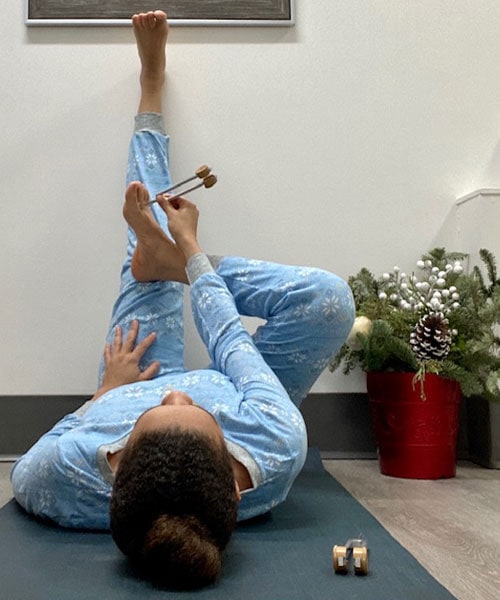
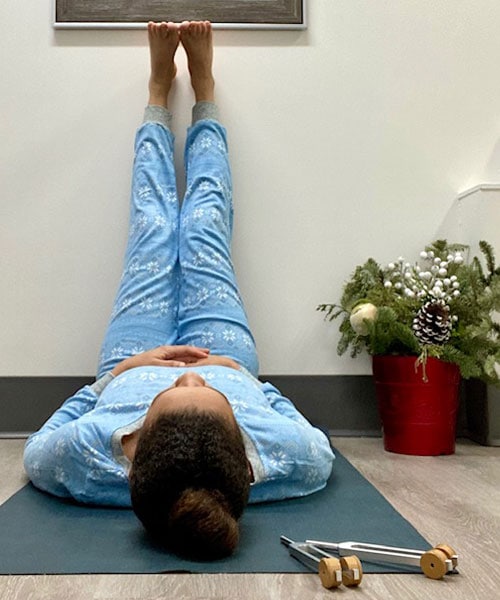
The Pose: Begin lying on your back with your legs straight up the wall. Your hips can be touching the wall or a few inches away from the wall. Support the sacrum or lower back on cushions, blankets or bolsters if you prefer. Bend the left leg so you can stimulate LR 3 on the left foot. Straighten the left leg then stimulate LR 3 on the right side. If stimulating LR 3 while in the pose is too difficult you can always stimulate the point before entering the posture. Straighten both legs then stay in wall caterpillar for as long as you like before moving on.
Enjoy savasana after, or perhaps a short meditation or a few rounds of your favourite chant before ending your session. Namaste and happy holidays!


